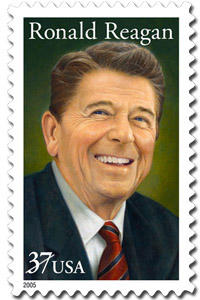After less than an hour, the judge, clerk, court reporter, defendants, and the attorneys returned to the courtroom, and the bailiff opened the door to the jury room. We assembled in the anteroom, and the bailiff let us into the courtroom. We filed into our assigned seats in the jury box for the last time, but now empty handed, without our pens and stacks of legal notepads.
The scene was at once familiar and foreign. The officers of the court, defendants, the judge's bench and witness stand, tables and chairs, jury box, gallery, seal of the Great State of Minnesota and the clock on the wall, and the American flag were all arranged as they were during trial and seared into our memories. For the first time, the defense and prosecution tables were bare of notepads and three-ring binders of evidence. Same courtroom, but this was a very different day.
The judge read each charge and asked us to confirm verbally in unison the verdict indicated on the verdict forms that our foreperson signed just minutes before. The defense accepted the option of having the jurors polled individually to confirm the unanimous verdicts. So the charges were read again and this time we were asked, one by one, whether we agreed with the verdicts as read. In those long minutes, we felt the full terrible weight and responsibility of our decision. We were unanimous in our verdicts and felt that justice was served, but that did not make it easy to face the accused.
The judge thanked us for our service, and the bailiff led us back into the jury room.
Some jurors later remarked about the reactions of the defendants and attorneys, but I found it too difficult to look in their direction during the reading of the verdicts. One juror remarked that she could feel her heart pounding so hard that she was afraid she was going to have a heart attack.
Eleven days after jury selection began, our jury service was over.
skip to main |
skip to sidebar

Pages
Search This Blog
About Me

- Scholar
- Observer of education policy and partisan politics, from the western suburbs of the Twin Cities, Minnesota. Co-founder and contributor to True North, a Minnesota-based conservative group blog.
Twitter Feed
Web Site Links
- Archive: Scholar's Notebook education blog
- SD 44 Republicans
- SD 44 DFL
- SD 33 Republicans
- SD 45 Republicans
- SD 48 Republicans
- Education Liberty Watch
- Minnesotans Against Common Core
- Taxpayers League of Minnesota
- Tea Party Patriots
- American Majority
- Minnesotans for Global Warming
- Center of the American Experiment
- Minnesota Family Council
- Association of Mature American Citizens
- Soldiers' Angels
- Wounded Warrior Project
- Minnesota Campaign Finance and Public Disclosure Board
- Minnesota Legislature
- Minnesota Secretary of State
- Republican Party of Minnesota
- MN House GOP Caucus
- MN Senate GOP Caucus
Political News
Blog Archive
Their Foes, Our Friends
Our Top Ten List of conservatives who drive the Left crazy:
- Sarah Palin
- Rush Limbaugh
- Michele Bachmann
- Glenn Beck
- Dick Cheney
- George W. Bush
- Karl Rove
- Tim Pawlenty
- Katherine Kersten
- David Strom
Topic Tags
politics
(259)
minnesota politics
(256)
2008
(74)
taxes
(60)
sd43
(44)
brian grogan
(40)
republican party
(38)
bonoff
(36)
legislature
(34)
republican
(30)
bpou
(24)
education
(23)
benson
(20)
mngop
(20)
jeff johnson
(19)
norann dillon
(19)
sarah anderson
(19)
david gaither
(13)
democrat
(13)
john benson
(11)
roads and transit
(11)
war
(10)
tea party
(8)
HD43B
(7)
MOB
(6)
2010
(5)
beer
(5)
bachmann
(4)
stadiums
(4)
sd45
(3)
sd33
(2)
HD43A
(1)


